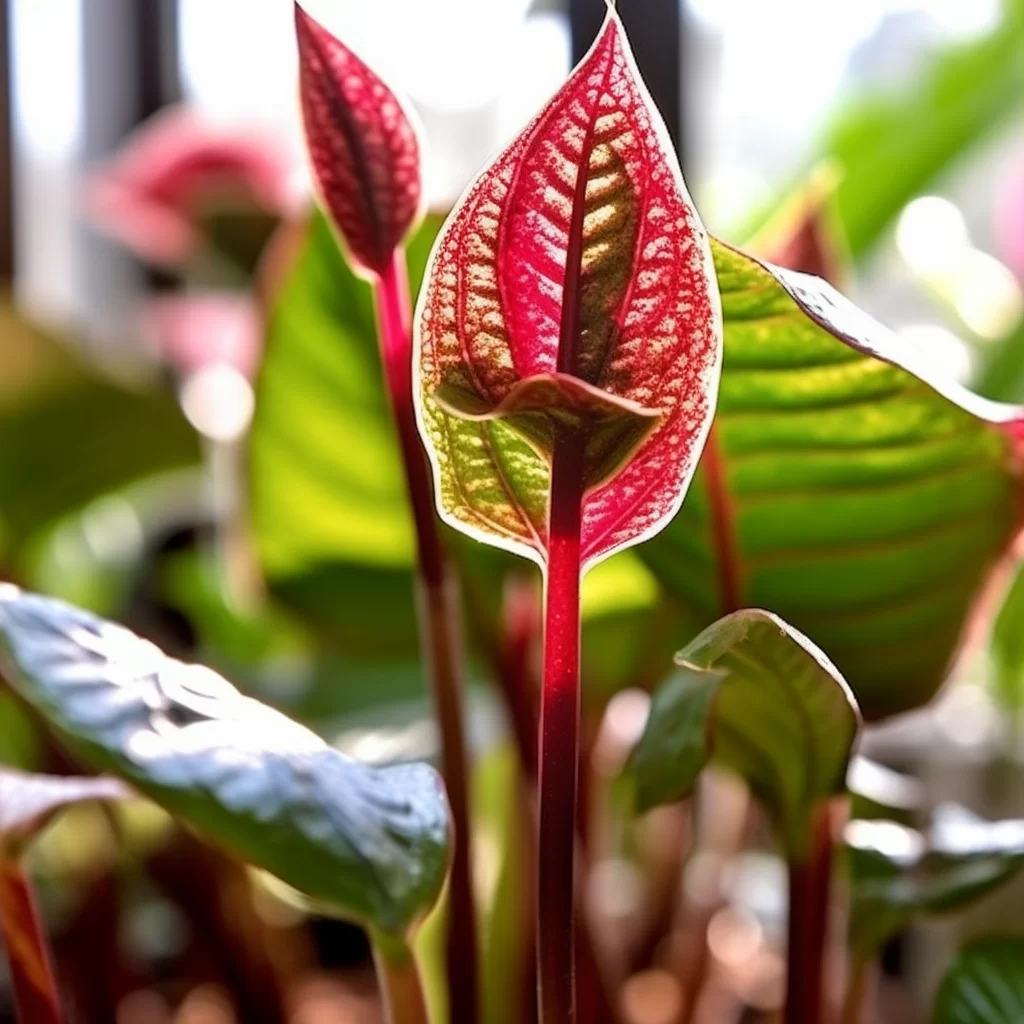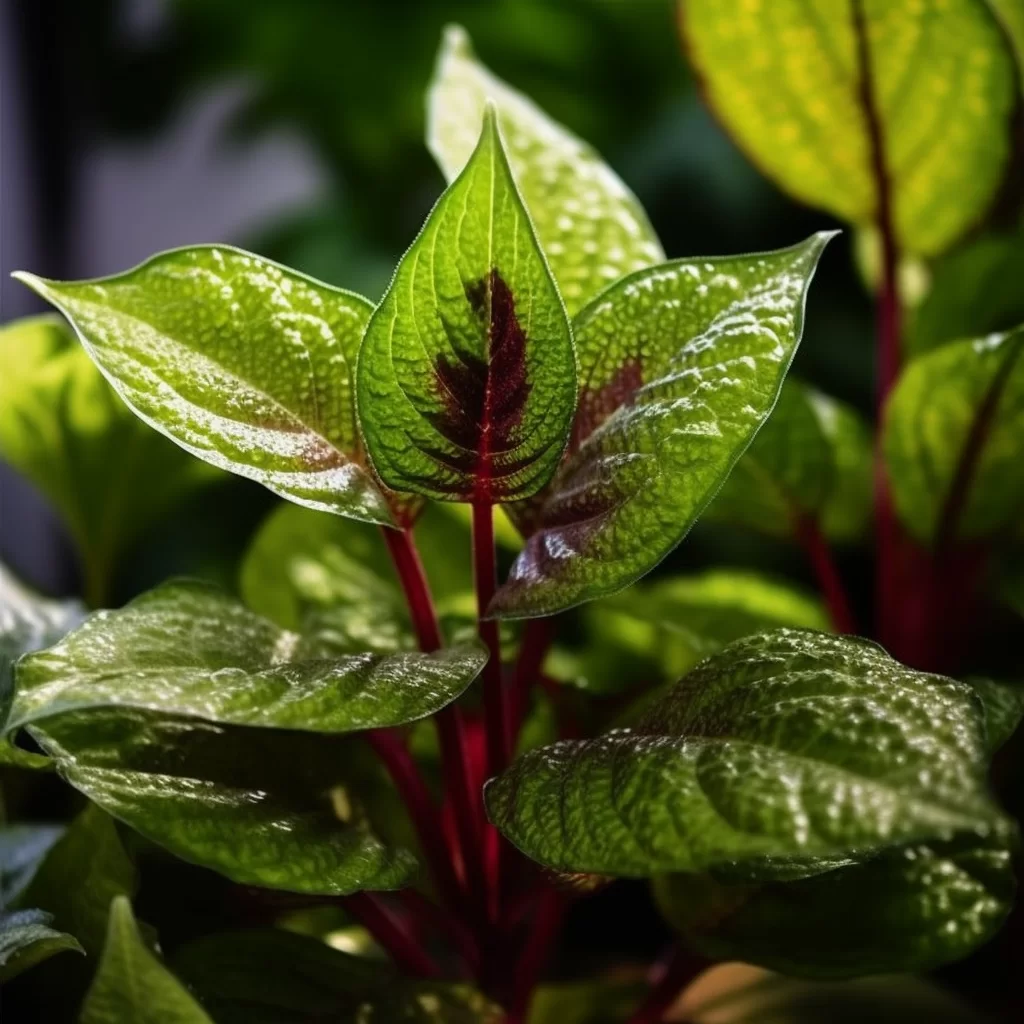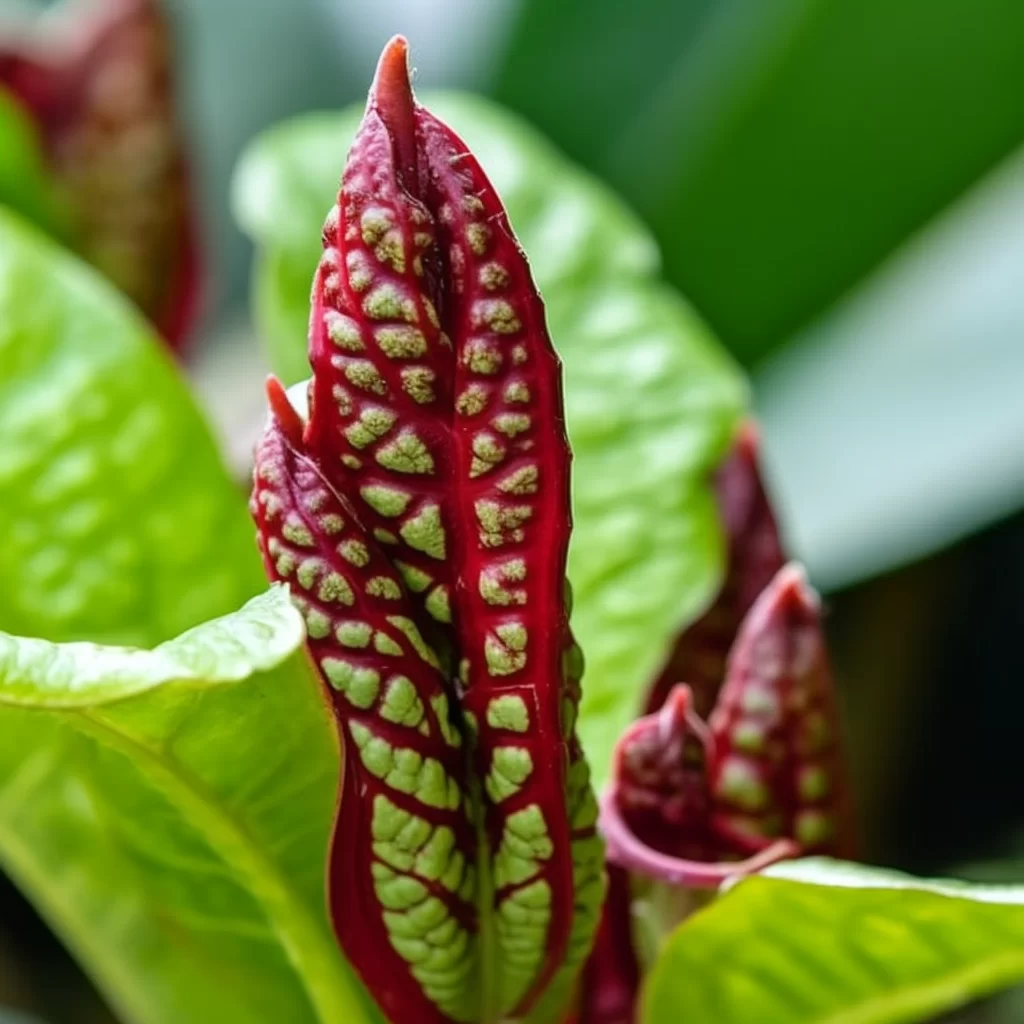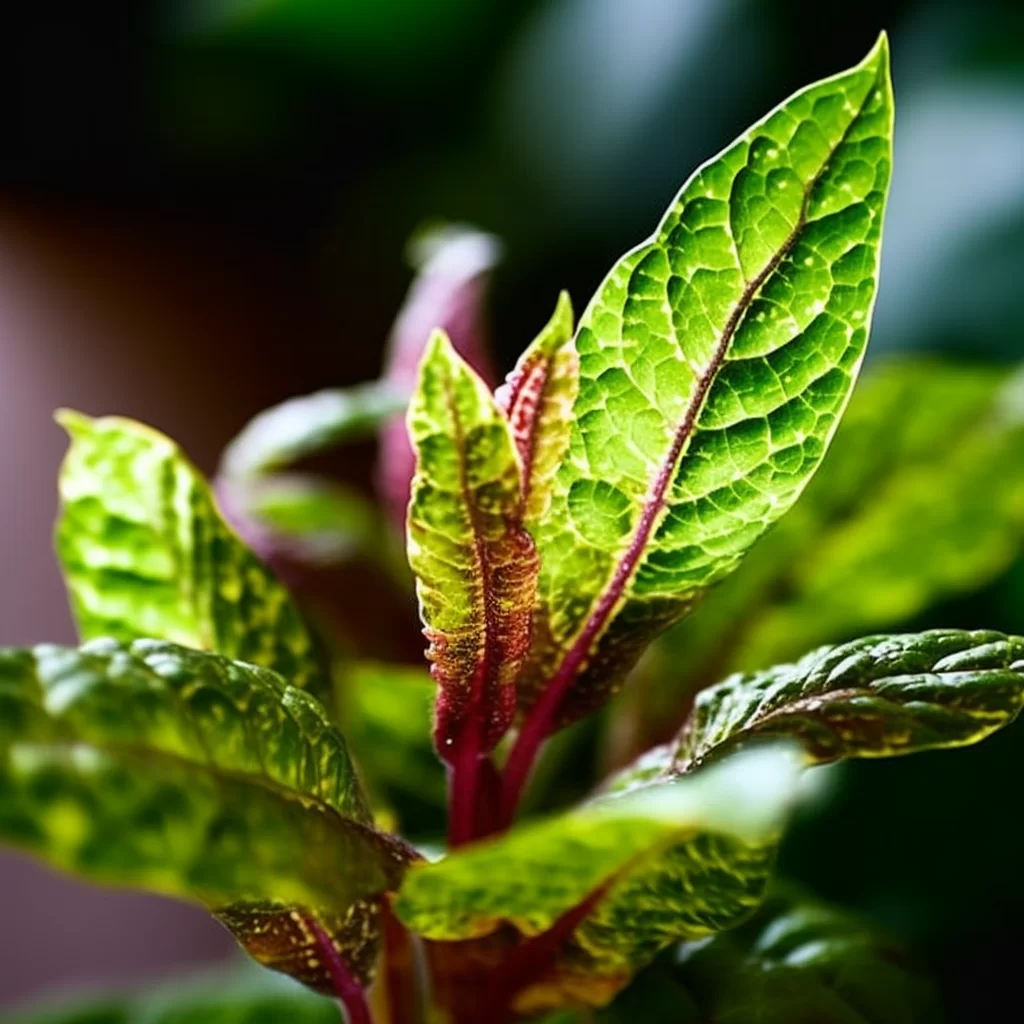Story of Day :
Contents
The Nephthytis Plant: A Complete Guide and Care Tips
If you’re on the hunt for a low-maintenance houseplant that can spruce up your living space, the nephthytis plant might be just what you need.
The arrowhead vine or syngonium podophyllum, as it is also known, is a tropical plant originating from Central and South America.
Not only does it add aesthetic value to any room with its charming foliage, but it’s also incredibly easy to care for.
Whether you’re a seasoned green thumb or someone new to plant parenting, this guide will equip you with everything necessary to keep your nephthytis thriving.Caring for your nephthytis involves minimal effort and attention.
It’s an excellent choice for those who are not used to nurturing plants or don’t have the luxury of time for high-maintenance ones.
With our comprehensive guide on all there is to know about taking care of this gorgeous houseplant, from watering and fertilizing tips to potential problems that may arise, even beginners can confidently experience success in growing their own nephthytis plants.
Lighting Requirements
Nephthytis, a beautiful houseplant, needs plenty of light to thrive.
However, it cannot withstand direct sunlight as it can harm its delicate leaves.
Therefore, it’s advisable to place this plant in a spot where it can receive filtered light.
A bright but indirect source of light is perfect for Nephthytis and will help keep the foliage looking healthy and vibrant. If you plan on placing Nephthytis near a window, make sure that the leaves are not in direct contact with the sun rays.
If you plan on placing Nephthytis near a window, make sure that the leaves are not in direct contact with the sun rays.
The best way to achieve this is by placing the pot away from the windowsill or using curtains or blinds to filter out any direct sunlight.
If you follow these recommendations and provide your plant with adequate lighting conditions, you’ll have yourself a thriving Nephthytis that will add beauty and life to your living space!
Watering Requirements
Nephthytis is a type of plant that thrives in moist soil, but too much water can harm it.
It’s important to strike a balance between hydration and overwatering.
If the soil gets too soggy or waterlogged, your plant may start to suffer.
To keep your nephthytis healthy, make sure you water it once a week and allow the top inch of soil to dry out before watering again.While water is necessary for all plants to grow, excess moisture can actually be detrimental for certain species like nephthytis.
Overwatering your plant can cause root rot which can eventually kill it off completely.
Therefore it’s important not only to provide adequate hydration but also ensure that the soil isn’t too wet which can lead to disaster down the line.
By following some basic guidelines such as watering once per week and allowing time for the topsoil layer to dry out before re-watering, you’ll be able to help your beloved nephthytis thrive in its environment without worry or trouble!

- If you see yellowing leaves, it could mean that your plant is being overwatered.
- If its leaves are wilting or droopy, then it needs more water than usual.
- A healthy-looking plant has green-colored foliage with no brown tips or edges on its leaves.
When it comes to temperature requirements, different organisms have varying tolerance levels.
Some require warmer temperatures, while others thrive in cooler environments.
For instance, cold-blooded animals like reptiles and amphibians need warmth from their surroundings to regulate their body temperature and metabolism.
In contrast, warm-blooded animals such as mammals maintain a constant internal body temperature regardless of the external environment.
Plants also have specific temperature needs for optimal growth and survival.Temperature requirements are not only important for living organisms but also crucial in various industrial applications such as food storage, pharmaceuticals production, and electronics manufacturing.
Extreme heat or cold can negatively affect the properties of materials used in these processes.
Therefore, maintaining precise temperatures is vital to ensure product quality and safety while minimizing waste and energy consumption costs.
Overall, understanding an organism’s temperature requirements can inform proper care protocols that promote healthy growth or prevent harmful effects on both biological systems and technical processes alike.
The perfect temperature range for this tropical beauty lies between 60-75°F (15-24°C).
This makes it an ideal indoor plant for temperate climates with a mild to warm environment.
However, during the winter months, it is important to ensure that the plant is not placed near drafty windows as cold drafts can be detrimental to its delicate foliage.
So, make sure you keep the plant away from any potential cold sources and maintain a consistent temperature range. It’s essential to pay attention to your tropical beauty’s temperature preferences if you want it to thrive in your home or office.
It’s essential to pay attention to your tropical beauty’s temperature preferences if you want it to thrive in your home or office.
Keeping your space at a comfortable and consistent temperature will help promote healthy growth and prevent any damage from occurring.
Be mindful of placing your houseplant in areas where it may be affected by changes in temperature due to external factors like drafty windows or doors.
With proper care and attention, you can enjoy the beauty of this tropical plant year-round!
To ensure the healthy growth of plants, it is important to understand their fertilizing requirements.
Fertilizers provide essential nutrients that are necessary for plant development and reproduction.
These nutrients include nitrogen, phosphorus, and potassium which are required for leaf growth, root development and flower formation respectively.The amount of fertilizer required by a plant varies depending on its size, age, and species.
Over-fertilization can cause damage to the plant as excess chemicals build up in the soil leading to toxicity or even death of the plant.
It is advisable to use organic fertilizers which contain natural ingredients that enrich the soil without causing harm to plants or animals around them.
By considering these factors while fertilizing your plants you can help them thrive and produce better yields while also contributing towards a healthier environment.
If you want your Nephthytis to thrive and live a long, healthy life, then it’s crucial to fertilize it properly.
During the growing season which is typically in spring and summer, you should give your plant a dose of balanced liquid fertilizer once a month.
However, there is one crucial thing you need to keep in mind: don’t over-fertilize.
Too much fertilizer can damage the roots of your plant and make it more susceptible to pests and diseases. Using half-strength diluted liquid fertilizer is an excellent way to ensure that your Nephthytis receives all the necessary nutrients without going overboard.
Using half-strength diluted liquid fertilizer is an excellent way to ensure that your Nephthytis receives all the necessary nutrients without going overboard.
Proper fertilization can help encourage lush green foliage growth and vibrant coloration on the leaves.
So if you want healthy-looking plants with gorgeous foliage, remember not to overdo it with the fertilizer!
Propagation refers to the process of reproducing plants through various means, such as seeds, cuttings, division and grafting.
Seed propagation involves sowing seeds in soil or growing medium and providing optimal conditions for germination.
Cuttings refer to sections of a stem or leaf that is removed from a plant and placed in water or soil until they generate roots.
Division involves separating a mature plant into smaller sections, each with its own root system.
Grafting is another method where two different plants are joined together so that they grow as one.Propagating plants can be an enjoyable pastime for gardeners and enthusiasts alike who want to increase their collection of rare or exotic species.
It allows them to produce multiple identical copies of their favorite plant without having to purchase new ones from a nursery or garden center.
Propagation also helps preserve rare and endangered species by enabling individuals and organizations to cultivate them in controlled environments rather than harvesting them from the wild.
Moreover, it provides an opportunity for experimentation with hybridization, cross-breeding different varieties of plants to create unique specimens with desirable traits such as improved disease resistance, larger fruits or flowers etc., creating new cultivars worthy of being introduced into the market for commercial production.
Nephthytis is a type of houseplant that’s incredibly easy to propagate.
There are two different methods you can use to grow new plants: stem cuttings or dividing the rhizomes during repotting.
If you choose to use stem cuttings, make sure that you select a healthy plant with at least two leaves per cutting.
After cutting the stems, dip the bottom in rooting hormone powder and then plant them in moist soil.
To encourage growth, keep them warm and wait for new shoots to appear.Dividing the rhizomes during repotting is another method of propagating Nephthytis easily.
Rhizomes are underground stems that produce shoots and roots from their nodes, which makes them an ideal way to create new plants.
When you’re ready for your Nephthytis repotting session, gently separate the rhizomes into smaller pieces with a sharp knife or scissors before planting each section in its own pot filled with fresh soil mix.
As long as they receive adequate light and moisture after being divided, these separated sections will quickly develop into mature plants on their own!
Pest control refers to the practices and methods used to manage or eliminate pests that are harmful or destructive to humans, animals, and crops.
Pests can include insects, rodents, birds, fungi, weeds, and other unwanted organisms.
Pest control efforts vary depending on the type of pest and the environment in which it is found.
For example, residential pest control may involve treatments for common household pests like ants or cockroaches using pesticides or traps.
Agriculture pest control may involve monitoring crops for signs of infestation and implementing measures such as crop rotation or biological controls like natural predators.Pest management is important for maintaining public health and safety by preventing the spread of diseases carried by pests like mosquitoes or rats.
It also helps protect property from damage caused by termites or carpenter ants while safeguarding agricultural crops from destruction caused by insects or plant diseases.
Effective pest control typically involves a combination of preventative measures such as proper sanitation practices combined with targeted treatment methods when necessary.
By carefully balancing environmental concerns with effective pest management techniques it’s possible to minimize the impact of pests while preserving human health and safety as well as ecological balance in our surroundings .
Nephthytis, also known as arrowhead vine, is a beautiful and popular houseplant that adds a touch of greenery to any room.
Unfortunately, it is also prone to various types of pests such as spider mites, mealybugs, scale insects (also called armored scales), aphids, fungus gnats and whiteflies.
These pesky critters can weaken the plant by feeding on its leaves or sucking the sap from its stem resulting in wilting and yellowing of the foliage.
However, there are simple ways to keep these pests at bay.One way to prevent infestations is by regularly inspecting your plant for any signs of bugs or disease.
Additionally, you can use natural remedies such as spraying diluted soapy water or neem oil on the underside of your plant’s leaves to deter these pests from taking up residence.
It’s also important to keep your Nephthytis healthy by watering it appropriately and ensuring it has adequate light exposure.
With proper care and attention, you can enjoy a thriving Nephthytis without worrying about unwanted guests ruining its beauty!
- Wipe down its foliage with a damp cloth regularly.
- Control humidity levels by misting the plant frequently or placing it on top of pebbles in a tray filled with water.
- If you spot any bugs on your plant’s foliage or soil surface; use insecticidal soap spray or neem oil solution as directed by the manufacturer.
Conclusion
If you want to add some natural beauty to your indoor space with minimal effort, the Nephthytis plant is an excellent choice.
This houseplant is easy to maintain, making it perfect for busy individuals who don’t have a lot of time to spend caring for their plants.
However, it’s important to remember that this plant does require specific care instructions, including adequate lighting and watering requirements, as well as a suitable temperature range and fertilizing needs.
Additionally, if you want to propagate your Nephthytis or keep pests at bay, there are specific techniques and tips that you should keep in mind.Overall, the Nephthytis plant is an excellent choice for anyone looking for a low-maintenance way to bring some greenery into their home.
With proper care and attention paid towards its unique requirements and needs, this hardy houseplant can be a beautiful addition that lasts for years on end.
Whether you’re new to plant ownership or simply looking for something easy-to-care-for that adds life into your living space; the Nephthytis should undoubtedly be on your list of top contenders!Taking care of your nephthytis plant is not just a responsibility, it’s also a source of joy for both you and the plant itself.
By giving your plant the love and attention it deserves, you can watch it grow into a beautiful lush foliage that will last for years.
This complete guide provides valuable insights into nurturing your nephthytis to ensure that it stays healthy and vibrant.
Whether you’re an experienced gardener or new to the world of plants, with proper care and attention, you can enjoy this delightful plant in all its glory.Happy gardening! With this guide on taking care of your nephthytis, you’ll be able to provide excellent support for your beloved plant.
Remember that taking care of plants is not just about watering them regularly; it’s about creating an environment that allows them to thrive.
With patience and dedication, you can help your Nephthytis grow into a stunning specimen worthy of admiration from all who see it.
So go ahead and indulge in some greenery therapy by spending quality time with this wonderful houseplant!